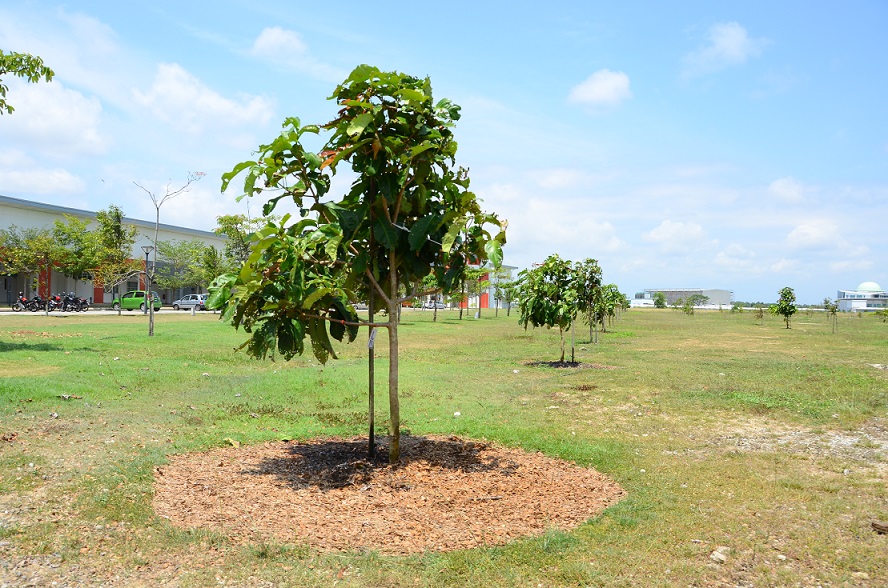Maintenance Strategies

Maintenance programs should be developed for trees and landscape plants planted to ensure the success of greening the campus initiative. A good maintenance program includes watering, fertilizing, pest and disease management and weed control. These programmes should be carried out systematically in a sustainable way in order to better manage our natural resources and to reduce its impact on the surrounding environment and communities.
Trees require nutrients to live and survive. However, landscape trees and shrubs are occasionally subjected to adverse soil and environmental conditions that contribute to nutrient deficiencies. Supplemental nutrients may sometimes be needed to help trees to promote growth and maintain vigour. Different types of fertilizers, such as chemical fertilizers, organic fertilizers, and natural fertilizers are available on the market. To make sure that our landscape plants are managed sustainably, we use organic fertilizer rather than chemical fertilizer in our soil nutrition management programme. The organic fertilizer not only provide nutrients to the plants, but it also improve soil conditions and fertility through the use of organic matter and beneficial microbes in the long-term. The impact of contamination of the environment, especially water bodies can be reduced significantly, thus improving the campus environment.
To water our landscape plants, we adopted automated drip irrigation system in order to systematically supply and minimize water loss as well as to systematically supply the plants with water to avoid water deficit. This ensures high survival of planted plants in our landscaping and greenery efforts as well as reduces man power requirement for watering our landscape plants.
Mulching is another important component to reduce transplant and water losses. Benefits of mulches include minimising fluctuations of soil temperature and soil moisture loss; weed suppression; soil nutritional enrichment; the prevention of soil erosion from heavy rains; increasing soil microbial activity and improving soil aeration. In addition, mulches can also prevent trunk damage from both biological and mechanical activities. Landscape mulches include both inorganic and organic mulches. The use of organic rather than inorganic mulches in urban landscapes is suggested for improved root growth of establishing trees.

